Low Profile Tires Vs Regular Tires (Pros, Cons and the Main Differences)
A few years back I was thinking about upgrading my 2017 Toyota RAV4 Limited tires. At a point during the market research, I stuck into low profile tires vs regular tires mess.
The RAV4 Limited came with regular profile tires but I was seeking the most probable outcome if possible. Eventually, I decided not to change the tires despite some noticeable pros offered by low-profile tires.
Why did I prefer them, let me explain.
Of course, a vehicle’s performance and appearance start with picking the right tires. Low-profile tires and regular tires each come with distinguishable advantages, depending on your needs.
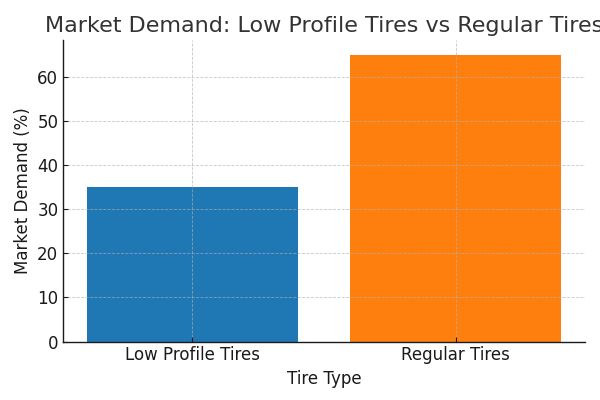
The automotive industry continues innovating with new materials and designs for rims and wheels, improving performance and style options. Whether aiming for better handling, a sportier look, or improved fuel efficiency, it’s must know the differences between low-profile and regular tires is crucial.
While Regular tires are preferred by drivers who prioritize comfort and off-road performance, Low-profile tires are often favored by those who value performance, handling, and a sportier aesthetic.
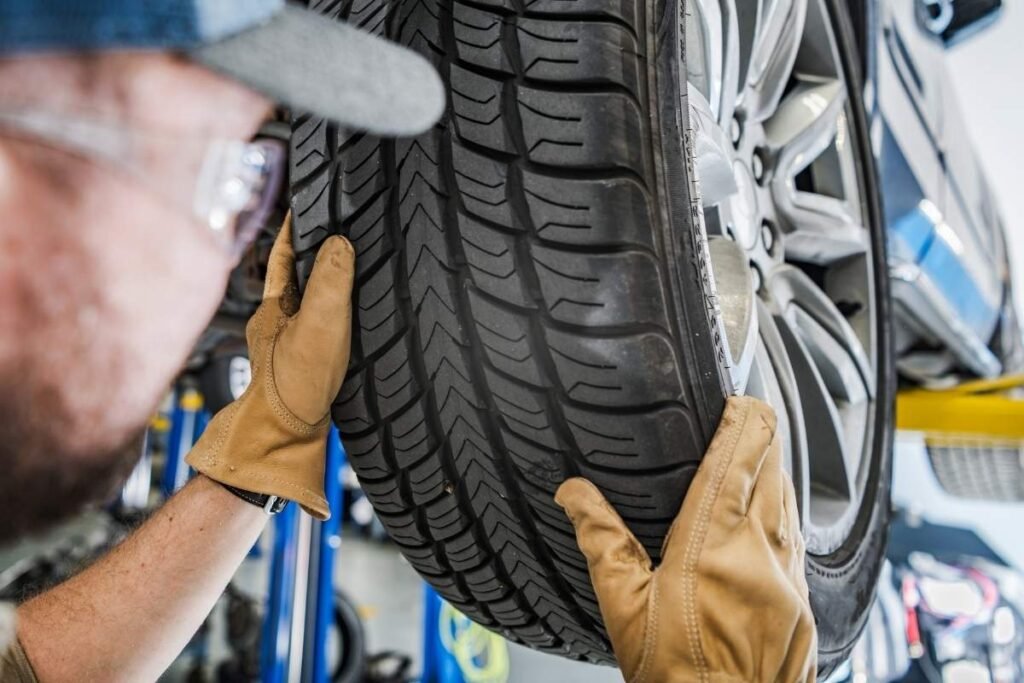
What Are Low Profile Tires?
Low-profile tires are a specific type characterized by a shorter sidewall (the vertical part of the tire between the rim and the road) and a wider tread (the part that makes contact with the road).
However, these shorter sidewalls and wider treads give your car a sportier look while boosting handling and responsiveness, especially at higher speeds. These tires are perfect for performance and luxury vehicles; they add that sleek edge.
But there’s a trade-off: less cushioning means a firmer ride, and they’re more prone to damage from rough roads. If you’re after sharper handling and bold style, low-profile tires deliver!
Pros:
- Handling: Improved stability and responsiveness in corners due to the stiffer sidewalls.
- Aesthetic Appeal: Sleek and sporty look that many car enthusiasts prefer for their vehicles.
- Better Traction: Wider tread increases the surface contact with the road, aiding grip in dry conditions.
- Shorter Braking Distance: Increased surface area can help reduce stopping distances, especially on dry roads.
Cons:
- Reduced Ride Comfort: The stiff sidewalls transmit more road bumps and vibrations to the cabin, leading to a rougher ride.
- Higher Risk of Damage: Prone to damage from potholes and curbs due to the reduced sidewall height.
- Increased Tire Wear: Low-profile tires wear out faster, particularly with aggressive driving.
- Higher Cost: Usually more expensive than regular tires, both to purchase and replace.
- Less Effective on Snow/Ice: Limited performance in winter conditions, as they struggle to maintain traction on icy or snowy roads.
What Are Regular Tires?
Regular tires, also known as standard tires, feature taller sidewalls and a more rounded tread profile than low-profile ones. This design provides a smoother ride and better cushioning over uneven surfaces, making them ideal for everyday vehicles.
Regular tires balance comfort, durability, and performance, securing good traction in mixed driving conditions. They are versatile, suitable for multiple cars, from sedans to SUVs, and provide reliable handling and stability.
Pros
- Comfortable Ride: Regular tires provide a smoother, more comfortable ride due to their higher sidewalls and softer rubber compounds.
- Durability: Built to handle a variety of road conditions, regular tires have a longer lifespan compared to low-profile options.
- Cost-Effective: Less expensive than specialized tires, making them a budget-friendly option for most drivers.
- Versatile: Suitable for a range of climates and surfaces, including wet, dry, and mildly snowy conditions.
- Fuel Efficiency: Their design offers lower rolling resistance, which can help improve fuel economy.
Cons
- Less Responsive Handling: Compared to performance or low-profile tires, regular tires may offer less precision in cornering.
- Moderate Performance in Extreme Weather: While capable in most conditions, they may not provide optimal traction in severe snow or icy conditions.
- Limited Aesthetic Appeal: Regular tires don’t have the same sleek, sporty look that low-profile tires offer, which some drivers prefer for style.
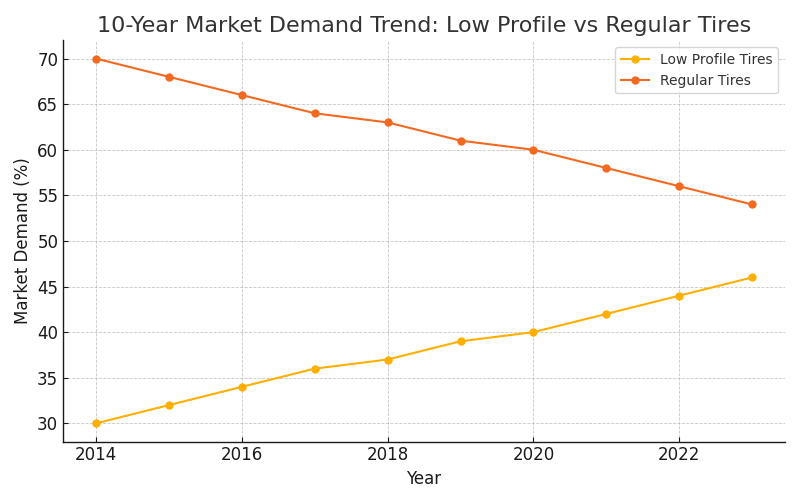
Low Profile Tires Vs Regular Tires: The Differences
During my research I found some remarkable differences that helped me to decide, I should definitely go for regular tires.
Each tire serves distinct common purposes, catering to different driving styles, preferences, and vehicle designs. While low-profile tires are favored for their sporty appearance and handling capabilities, regular tires offer comfort and practicality for everyday driving.
Despite these common facts, I noticed seven main differences between these two tire types, helping you make an informed decision based on your needs.
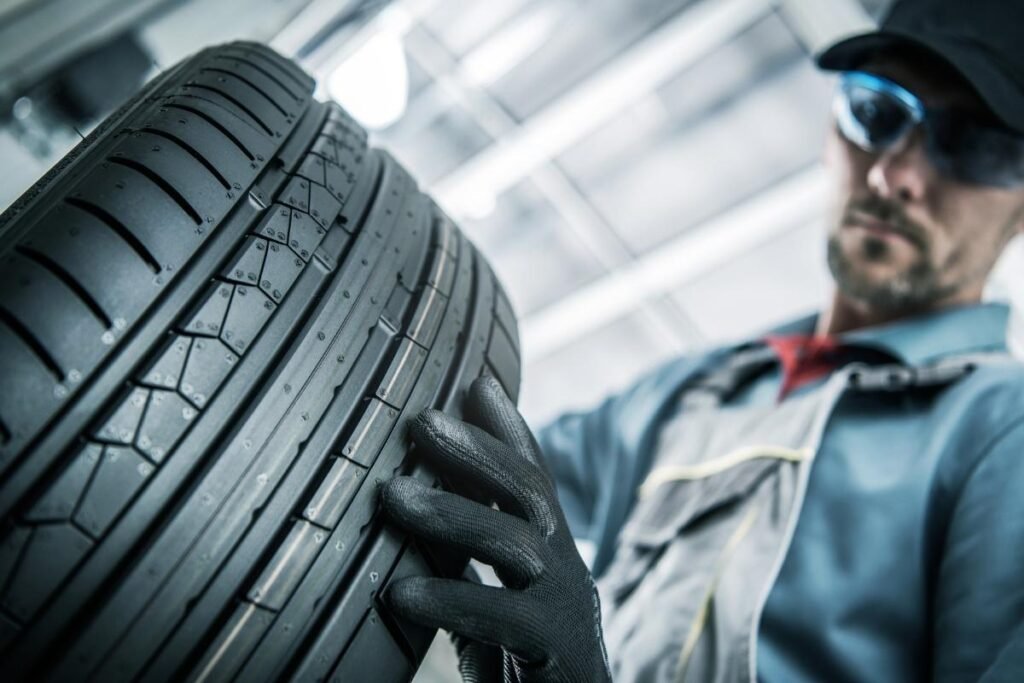
1. Sidewall Height
The most noticeable difference is the sidewall height. Low-profile tires have shorter sidewalls, which enhances the car’s sporty look and performance.
In contrast, regular tires feature taller sidewalls, providing better cushioning and a smoother ride over bumps and potholes. This difference affects both the aesthetic and functional aspects of the tire.
2. Operating and Implementation
Low-profile tires are designed for improved handling and responsiveness, especially during high-speed maneuvers. Their rigid sidewalls allow for better cornering and stability.
Regular tires prioritize comfort over performance while still providing good handling, making them ideal for everyday driving.
In sporty scenarios, they may not grip the road as tightly as low-profile tires.
3. Ride Reassurance
Regular tires excel in ride comfort due to their taller sidewalls, which absorb road imperfections more effectively. This cushioning translates to a smoother experience, reducing vibrations inside the vehicle.
Low-profile tires, while offering a thrilling driving experience, can result in a harsher ride, as they provide less shock absorption and can transmit more road noise.
4. Traction
The tread design and width also play a role in traction. Low-profile tires often have wider treads, enhancing grip during cornering and acceleration.
The reduced sidewall flex may decrease their performance in snowy or wet conditions.
Regular tires are designed for all-season performance, offering better traction in different weather conditions, including rain and snow.
5. Durability
Regular tires tend to be more durable in everyday driving situations. Their taller sidewalls provide additional protection against road hazards, reducing the likelihood of damage from potholes or debris.
Low-profile tires, while aesthetically pleasing, can be more susceptible to sidewall damage due to their reduced height and stiffer construction.
6. Visual Inducement
Low-profile tires are known for their aggressive, sporty appearance, making them popular for performance cars and enthusiasts.
Their sleek design enhances the overall look of the vehicle.
On the other hand, regular tires offer a more traditional appearance, focusing on practicality rather than style.
7. Expenditure
Of course, there’s the cost factor. Low-profile tires often have a higher price tag due to their performance capabilities and specialized design.
Regular tires are typically more budget-friendly and widely available, making them a practical choice for everyday drivers.
In short, low-profile and regular tires have unique advantages and considerations.
What Is the Aspect Ratio of a Tire?
The aspect ratio of a tire is the ratio of the tire’s height (from rim to tread) to its width. The ratio is expressed as a percentage and is usually found in the tire size code on the sidewall.
For example, in a tire marked P215/65R15, the “65” is the aspect ratio and that means the tire’s height is 65% of its width.
Why It Matters
- Higher aspect ratios (like 70 or 75) mean taller sidewalls, which provide a softer, more cushioned ride.
- Lower aspect ratios (like 40 or 45) indicate shorter sidewalls, often found in performance tires, offering better handling and a sportier look but a firmer ride.
Tire Aspect Ratio Comparison: Low Profile Tires Vs. Regular tires
| Low-Profile Tires | Regular Tires | |
| Aspect Ratio | 30–55 | 60–75+ |
| Sidewall Height | Shorter sidewalls | Taller sidewalls |
| Handling | Enhanced cornering and handling | More flexible, softer handling |
| Ride Comfort | Firmer, potentially harsher | Smoother, more cushioned |
| Durability | More prone to impact damage | Better resistance to road impacts |
| Cost | Generally higher | More affordable |
| Common Use | Performance and sports vehicles | Standard and family vehicles |
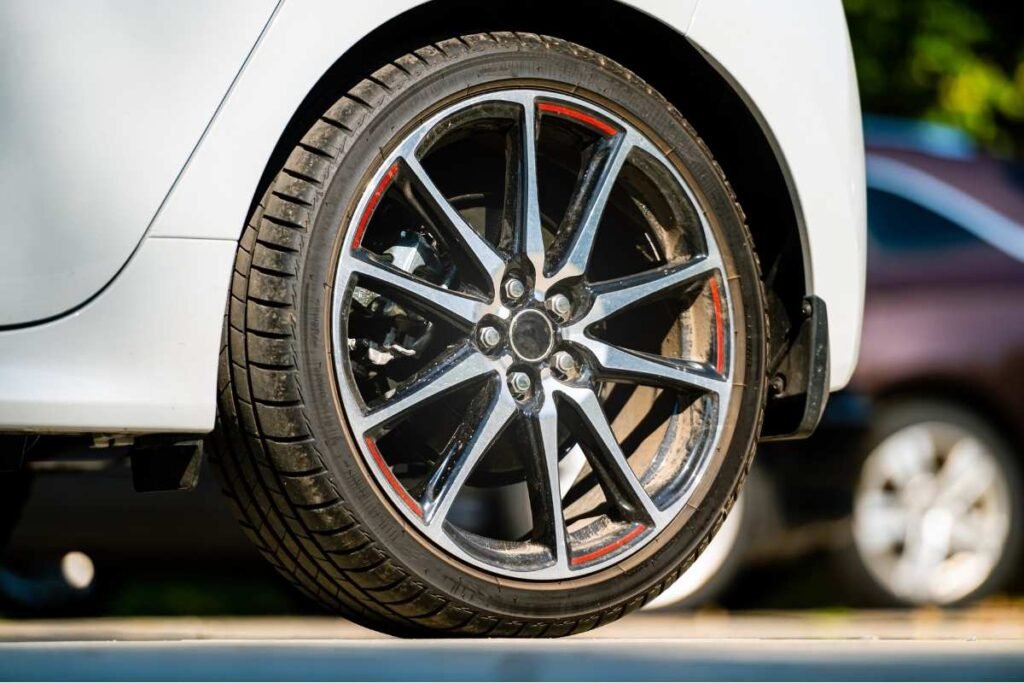
What are the Disadvantages of Low-profile Tires?
Despite their sporty appearance and enhanced handling, low-profile tires have several disadvantages, too.
For instance, they provide a harsher ride due to shorter sidewalls, which causes less cushioning over bumps. Additionally, their stiffer construction increases the risk of damage from potholes and road hazards.
Low-profile tires can struggle in adverse weather conditions, may be more expensive, and tend to generate more road noise. Limited availability for specific vehicles and potential impacts on fuel efficiency are also important considerations for drivers.
How Long Do Low Profile Tires Last?
The durability is impressive, as low-profile tires last between 30,000 and 50,000 miles, depending on factors such as driving habits, road conditions, and maintenance.
Regularly checking tire pressure, rotating tires, and ensuring proper alignment can help extend their lifespan.
However, low-profile tires often have a softer rubber compound for better grip, so they may wear out faster than regular tires, mainly if used frequently for aggressive driving or on rough terrain.
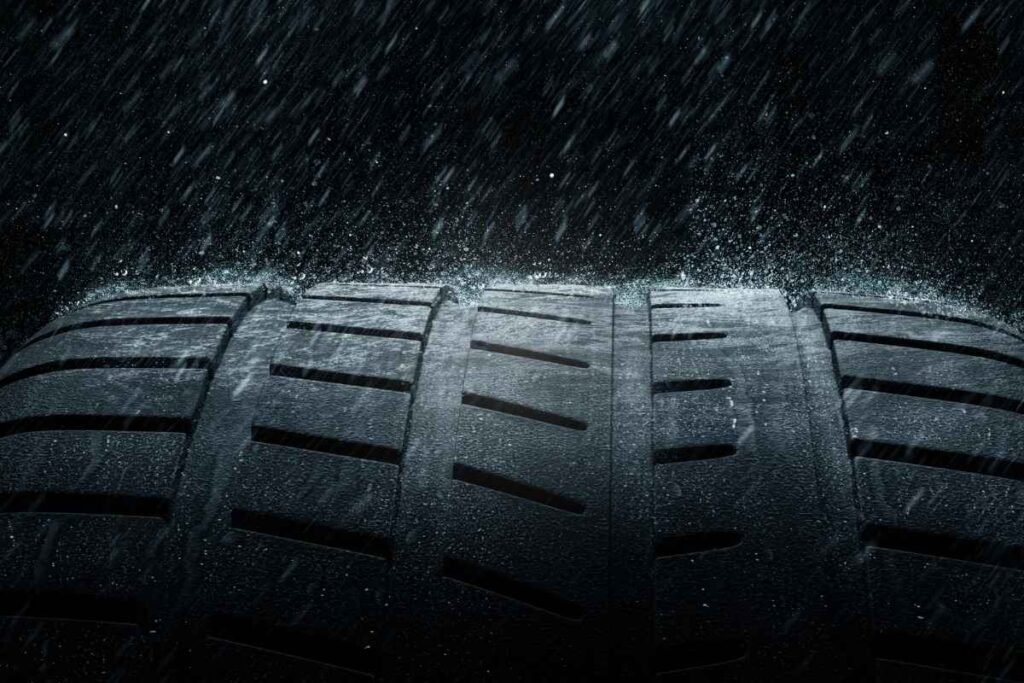
Are Low Profile Tires Good in Snow?
Honestly, Low-profile tires are not the best choice for driving in snow. Their shorter sidewalls and wider treads can reduce traction on slippery surfaces, making them less effective in winter.
The stiffer construction of low-profile tires means they offer less sidewall flex, which is crucial for maintaining grip in snow and ice.
For better performance in winter weather, it’s advisable to use dedicated winter tires designed with deeper treads and softer rubber compounds to enhance traction and control.
Popular Aftermarket Brands: Low Profile Tires Vs Regular Tires
I also did some research on which company makes durable and a bit less expensive tires. From the hundreds of brands, I made this list according to the recent market on the basis of their quality, performance, and reliability.
Whether you’re after sportier handling or everyday comfort, these brands have you covered.
Popular Low-Profile Tire Brands:
- Michelin Pilot Sport – Known for high-performance handling and grip.
- Pirelli P Zero – Offers excellent traction for sports cars.
- Continental Extreme Contact – Great for wet and dry conditions.
- Bridgestone Potenza – Designed for responsive steering and stability.
- Goodyear Eagle F1 – Combines performance with durability.
Popular Regular Tire Brands:
- Michelin Defender – Excellent all-season reliability and comfort.
- Goodyear Assurance – Known for durability and all-season traction.
- Bridgestone Turanza – Focused on comfort and long-lasting performance.
- Firestone Destination – Ideal for everyday driving, especially SUVs.
- Continental TrueContact – Balances performance with fuel efficiency.
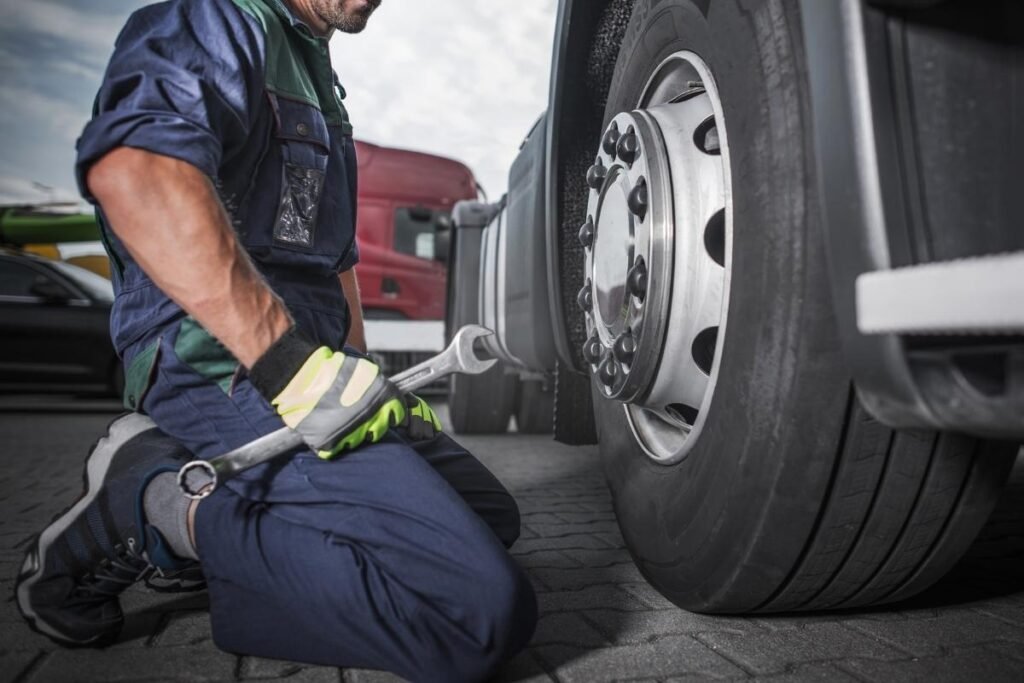
How to Calculate Sidewall Height?
To calculate the sidewall height of a tire, you’ll need the tire’s width and aspect ratio, both of which are displayed in the tire size.
The sidewall height is the height from the rim to the outer edge of the tread. Here’s the formula:

Example
If a tire is labeled P215/65R15:
- Width = 215 mm
- Aspect Ratio = 65%

The calculation helps you understand how much tire height is between the rim and the road, which impacts comfort and handling.
Can You Put Regular Tires on Low Profile Rims?
No, you cannot put regular tires on low-profile rims due to the difference in tire structure and fitment.
Regular tires have a taller sidewall designed for standard rims, while low-profile tires are specifically made with shorter sidewalls to fit low-profile rims.
Can I Use Tires with Different Aspect Ratios?
Yes, you can use tires with a different aspect ratio, but the overall diameter change needs to be within 3% of the original to avoid issues with speedometer accuracy, handling, and clearance.
Before trying, always consult your vehicle’s manual or a professional to confirm compatibility.
What Is the Middle Number in Tire Size?
The middle number in tire size, like the “65” in P215/65R15, is the aspect ratio. It represents the tire’s sidewall height as a percentage of its width.
For example, the sidewall height is 65% of the tire’s width (215 mm). This ratio affects the tire’s performance, ride comfort, and handling.
Observation
So, the regular tire is a good-to-go option if it is your daily car for its outstanding longevity and performance.
Low-profile tires offer enhanced handling and a sporty appearance, making them appealing for performance enthusiasts, while regular tires excel in comfort, durability, and versatility for everyday driving.
If you are still stuck in low profile tires vs regular tires I would suggest please don’t. The right choice depends on your needs, vehicle type, and driving conditions.
So, make it as simple as that. By carefully consideration these factors, you can select the suitable tires to improve your driving experience and ensure safety on the road.







